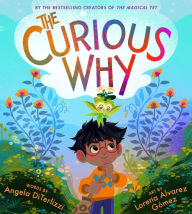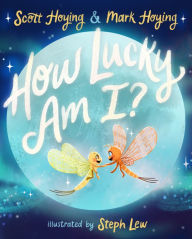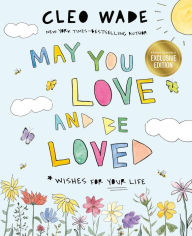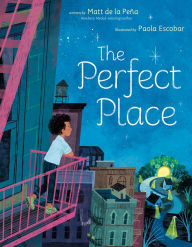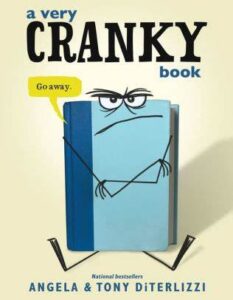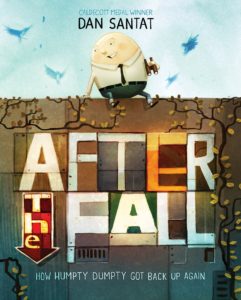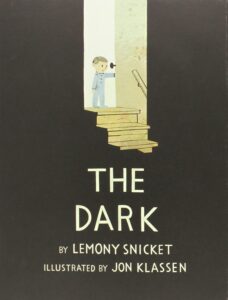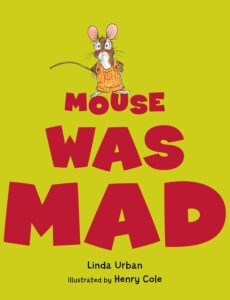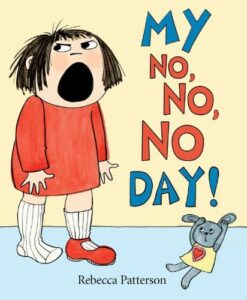Something Good
Author: Kenneth Kraegel
Illustrator: Kenneth Kraegel
11 February 2025
Candlewick
40 pages
Book description from Goodreads: “In need of a bad day remedy? One girl’s terrible day takes an unexpected—and extraordinary—turn when she comes upon a pair of magic socks.
Blah. Nothing good ever happens to me.
This morning a little girl wakes up with a chicken on her head. (Ouch.) Then she finds worms in her cereal (after she’s had a few bites—yuck!). Then she realizes, too late, that her boots are full of mud. Ack! Then her best friend ignores her, a big hole appears where it wasn’t yesterday, and it starts to rain—cold rain, of course. Could this day get any worse? When a mysterious gift shows up out of nowhere, wrapped in a bow, the girl dares to wonder if it could finally be something good. Get ready for a high-flying tale as the beloved creator of Wild Honey from the Moon brings his signature deadpan humor, quirky charm, and appealingly simple text to a fantastical adventure sure to turn even the worst days around.”
Need some reviews of Something Good?
Reading Activities inspired by Something Good:
- Before Reading–From looking at the front cover:
- What do you think this book will be about?
- What kinds of things do you think count as “something good”?
- What kind of mood does the cover character seem to be in? Why do you think that?
- Have you ever had a day that started out really bad? How did it make you feel?
- What are some small things that can help turn a day around?
- What questions would you like to ask the author before reading the book?
- After Reading–Now that you’ve read the story:
- What questions would you like to ask the author before reading the book?
- Why did the gift of socks feel disappointing at first?
- How did the socks change the character’s day—and mood?
- Why do you think Zoe ignored the main character at the beginning? What was really going on?
- How did the main character’s feelings change throughout the story? What caused those changes?
- Why do you think they decided to give the socks to someone else at the end?
- What message do you think this book is trying to share?
- Would you recommend this book to a friend? What part would you tell them about first?
- Blah-Day Bingo: Make one bingo board with silly bad-day moments like “stepped in something squishy,” “ran out of cereal,” or “lost your sock.” Then, during the day or while reading the book, see how many squares you can check off. Now make a second board filled with cheerful things like “someone smiled at me,” “found a cool rock,” or “heard a funny joke.” The goal? Try to fill your “something good” board faster than your “blah” one—and see how your mood shifts as you look for the good stuff!
- Chicken Hat & Magic Socks Craft: Create your own ridiculous chicken hat using paper, feathers, and imagination, just like the one from the beginning of the book. Then make a pair of “magic socks” using cardstock or paper. Decorate them with drawings of the adventures you would go on if your socks could fly. What powers would they give you? Who would you share them with?
- Mood Meter Map: Draw a line across a page and mark one end as “Total Blah” and the other as “Amazing!” As you reread the story, track the main character’s mood on this line. What made things worse? What helped? Then make your own mood meter for a recent day and chart what affected your feelings. Did something small help shift your mood in a big way?
- The Gift You Didn’t Expect: In the story, a plain pair of socks turns out to be the best surprise of all. Think of something simple—like a pencil, a pebble, or a balloon—and invent a story where it becomes magical. What does it do? How does it change your day? Write a short paragraph or comic strip to show how an ordinary object became something good.
- From Blah to Hooray! Mini Book: Fold a piece of paper into a tiny book. On the first page, draw or write about a “blah” thing. On each following page, draw or write what helps that mood shift—maybe a friend shows up, a silly animal appears, or magic socks arrive! End your mini book with a big “Hooray!” moment to show how things got better.
- Share Something Good Challenge: The character realizes that sharing something good makes it even better. Try it yourself! Choose one small, good thing to share today: a compliment, a snack, a toy, or a funny story. What happened when you shared it? Did someone smile? Did it change their day, or yours? Write or draw what you noticed.
- Peanuts Vibes Soundtrack
This story has been compared to Peanuts comics—funny, moody, and full of charm. Imagine this book had a soundtrack. What kind of music would you play at the beginning when everything is going wrong? What about when the magic socks appear? Make a playlist or just describe the sounds. Slow and rainy? Bouncy and silly? Dreamy and floaty? - Books, Books, and More Books! Check out these real-world books about bad days, surprising joys, and learning to see the good:
 Alexander and the Terrible, Horrible, No Good, Very Bad Day by Judith Viorst, illustrated by Ray Cruz
Alexander and the Terrible, Horrible, No Good, Very Bad Day by Judith Viorst, illustrated by Ray Cruz
The ultimate bad-day picture book. Alexander has one frustrating moment after another—but readers come to see that some days are just like that, and they still end with love.
A Bad Case of the Stripes by David Shannon
Camilla is worried about fitting in, and it causes her to literally break out in stripes—and then polka dots, and even worse! A story about staying true to yourself, even when things feel weird or overwhelming.

The Magical Yet by Angela DiTerlizzi, illustrated by Lorena Alvarez
For anyone feeling frustrated about what they can’t do yet, this book shows that hope, patience, and persistence can turn almost any day around. A great reminder that something good might be just around the corner.
 Rain! by Linda Ashman, illustrated by Christian Robinson
Rain! by Linda Ashman, illustrated by Christian Robinson
One rainy day is seen two totally different ways by two characters. This joyful story reminds us that perspective shapes how we experience the world—and a “blah” day for one person might be a magical one for someone else.

What If, Pig? by Linzie Hunter
Pig is having a worry-filled kind of day, but thanks to a kind friend, things start to look brighter. A great book about friendship, anxiety, and noticing when we need support—and when others might, too.




